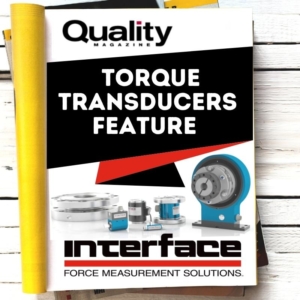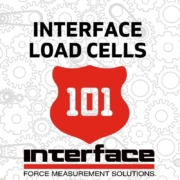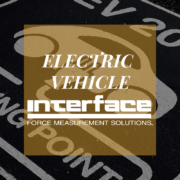Insights in Torque Testing Featured in Quality Magazine
 With the explosive growth in industrial automation and advanced manufacturing, torque measurement is a hot topic for test and measurement applications across a multitude of industries. We see demand rising due to the use in electric and autonomous vehicle testing, as well as in building components used in robotics and for spacecraft. Demand for torque transducers is so popular, Quality Magazine asked Interface’s product and custom solutions expert Keith Skidmore to contribute an article all about torque testing and how to get the most out of the transducer’s testing data.
With the explosive growth in industrial automation and advanced manufacturing, torque measurement is a hot topic for test and measurement applications across a multitude of industries. We see demand rising due to the use in electric and autonomous vehicle testing, as well as in building components used in robotics and for spacecraft. Demand for torque transducers is so popular, Quality Magazine asked Interface’s product and custom solutions expert Keith Skidmore to contribute an article all about torque testing and how to get the most out of the transducer’s testing data.
Interface has a deep line of innovative torque transducers used where torque measurement is critical to the success of engineering and manufacturing products and components. We provide both an extensive array of standard transducers and custom torque solutions to be used in applications as large as rocket ships, to as small as measuring the torque on a bolt wrench.
Included below is a brief overview of Keith Skidmore’s contributed article in Quality Magazine outlining the basics of torque testing and providing examples of real-world applications of Interface products used to test and measure torque.
Getting The Most Out of Torque Testing
Torque is defined as the rotational equivalent of linear force. It’s a measure of how much a force acting on an object causes that object to rotate. This is one of the key measurements for engineers doing design, test, and manufacturing across a wide variety of industries where machines, vehicles, components and parts include a spinning or rotating motion. It’s critical to understand how to measure torque if you’re doing product development with these types of systems such as engines, crankshafts, gearboxes, transmissions, and rotors.
The incredibly wide variety of torque transducers, different types of devices and tests and the accompanying accessories necessary for different projects can make it difficult to determine what is needed for each individual application. For instance, torque tests are often used in the automotive industry to assess engine torque and speed, but the products used can differ between a typical gas vehicle and newly introduced electric vehicles. Torque is also frequently used to test the tightness of a variety of lug nuts and screws, which is an entirely different measurement solution.
This article provides a brief overview of the key considerations when planning for a torque test. It includes the different types of torque testing, the different torque sensor styles, accessories, mounts, and other tips and tricks. It also provides a brief overview of the potential applications of torque tests with pictures.
The article goes on to provide the basics of torque testing, as well as providing real world applications of torque test and measurement. Here is a preview of one of the applications included in Keith’s contribution to Quality Magazine. To read the article in its entirety, please click the link here.
Engine Dynamometer Testing
In this application example, a rotary torque transducer is used to measure the speed and torque of an engine. This rotary transducer can sense the torque of the engine with high precision and provide an electrical output that is converted from an analog to a digital signal. A rotary transducer is necessary due to the spinning element involved in the engine. It’s paired with a very high-quality coupling and is mounted in a fixed position. Both are necessary to account for the high speeds used in the test. This application would allow the user to measure both torque and speed of the engine simultaneously, which will provide valuable data in confirming the design of the engine or determining if it needs to be adjusted for the vehicle it will drive.
To see the range of torque products offered by Interface, download our Interface Torque Transducers brochure.
Additional Resources
Torque Measurement for Electric Vehicles
AxialTQ™ Wireless Rotary Torque Transducer







